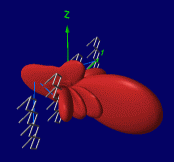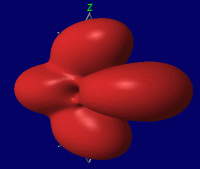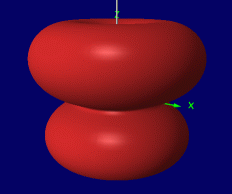F.Rysanek's repository - assorted stuff
By: Frank Rysanek [ Frantisek DOT Rysanek AT post DOT cz ]
(See my LinkedIn profile in Czech and English)
It so happens that I have some more goodies to share. That's the sole purpose of this page.
Once upon a time, I decided that I needed to embed Perl in a multithreaded server
written in GNU C++ under Linux. I've found some nice documentation about how to do
this in single-threaded environment- but there was apparently no information on
embedding Perl in multi-threaded programs. Therefore, I tried to investigate the
source code of Thread.c. I also had to learn to bootstrap statically linked
extensions. And to make the whole thing compile in C++, rather than plain C.
I've also had some fun with anonymous subs called by CV, all of that as seen
from C++.
Enjoy the result. There are about seven scratchpad-style
examples from my very first XSUB to a seemingly workable multi-threaded scenario.
I have written an experimental object/hierarchical/directory database server, with
embedded Perl - I call the poor creature a Kludge.
If you decide to take a look, please be tolerant - and let me know your opinion.
This is an extremely premature release - just to get some peer review, whether or not
this is worth the bother.
I had a bit of a misunderstanding with my notebook battery - it took me a while to
figure out how to talk to it from Linux via I2C. Now you can read about it in
English and Czech.
A mini-HOWTO on how to setup
a custom splash-screen logo in Isolinux (the boot manager on recent bootable
Linux CD's).
A mini-HOWTO on how to setup IP
over sync serial line in Linux, using a sync serial PCI card based on the
Infineon PEB20534 chip (AKA DSCC4) and the appropriate open-source drivers.
My employer (FCC PS) is manufacturing such a PCI board.
I have a few notes on the Promise FastTrak TX2000 in Linux. Other keywords are PDC20271 and pdcraid.c. There's a bug in array detection in the open-source drivers, the modular-only Promise-proprietary driver can be monolithized (i.e., no need for an initrd).
I also have a few newbie notes on the U2008B phase controller, based on my recent personal experience.
I've had a minor skirmish with an SPI Flash containing the BIOS on one MSI motherboard: here's the cable and method. This was not quite on the job, certainly not written on behalf of my employer, so it belongs on my personal page.
On my current job, I've written a couple of articles on various hardware topics. They may be hard to find at my employer's web site - that's why I've set up an index page for my articles - most of them are in Czech and some are in English.
There are people who might be interested to know where I work at the moment:
I'm happy to work for FCC Prumyslove Systemy s.r.o..
A quick hack Yagi antenna for Channel 58 - for our local DVB-T transmitter...
A couple tips on How to get your XP unstuck and how to cope with Windows 7 on a notebook and in general (both are in Czech, for local audience)
While trying to back up the phonebook from my dying Nokia 6021 using gnokii,
I've written two Perl scripts to manipulate the resulting multi-entry VCARD/VCF files:
- mlgrep.pl = a general-purpose grep-like utility to select entries
from text-based "database files", where multi-line entries are separated by empty lines,
and where each line in an entry stores a single attribute (key:value pair).
Two particular formats that come to mind are VCARD/VCF and RIPE RPSL.
On this particular occasion, I wrote the script to select only entries that were not
saved on the SIM (= that were stored in the phone's internal memory), which can be
filtered by some VCARD tags.
- names-and-numbers.pl = convert the multi-entry
VCARD/VCF phonebook file produced by gnokii/gnocky into a more human-readable and
compact format, suitable for hardcopy ("paper backup" :-). This converts each VCARD
entry into a single line, consisting of "number <TAB> Full Name".
So the resulting file still has many lines, but only one line per phonebook entry.
- C5.pl = convert the multi-entry VCARD/VCF phonebook file
produced by gnokii/gnocky into a subdirectory called ./out, full of single-entry
VCARD/VCF files, one per every contact entry. The point is to make these suitable
specifically for direct import into a Nokia C5. To make this possible, two additional
touches are needed: the entries are down-converted into a Nokiesque VCARD 2.1 format,
inferred from some "backup" VCARDs produced by the C5 itself. Plus, to accomodate
a bit of eastern-european latin-like alphabet (UTF-8 with accutes, charons and umlauts),
there is a conversion of the flat binary UTF-8 into "quoted printable" encoding.
When it comes to mobile phones, I'm hopelessly technophobic and backwards :-/
A while ago, I've discovered NEC2, namely the 4nec2
toolbox. Beautiful toys :-) I tried experimenting with some quad (biquad, quadro-quad) radiators.
It was clear to me that rather than try to construct the antennas by hand in the 4nec2's limited
3D editor or try to write the NEC2 source files by hand, it would ultimately be much more feasible
to write some simple scripts (ultimately they're simple C programs) to generate
the NEC files for me, including key parameters of the design as NEC2 variables ("symbol cards"),
which could then be adapted to different nominal wavelengths and subjected to optimization using 4nec2,
all of that within the NEC2 text file, rather than the generator's C source code...
In the end the exercise proved rather fruitless, as far as the WiFi bands are concerned,
but it was nonetheless pretty entertaining and educational :-)


And a small update: while trying to optimize a makeshift "quarter-wave whip
antenna" for 5GHz WiFi use, quite to my amazement I've found out that
a 3/4 lambda whip features an inherent perfect match to a 50 Ohm coax (at the
center frequency). Its spatial radiation diagram has two mighty lobes pointing
approximately 45 degrees up and down, and very little sensitivity towards
the horizon. Which happend to be an optimum radiation pattern for my indoor
use (on a moving client, with AP's hanging off the ceiling way up above).

Ever heard a water tap oscillate? Or some other hydraulic system?
Well I have - and I've written down the math, for my own education,
and for others who may be just as curious as I was. The text is in Czech...
Ever wondered what an off-road baby buggy would have to look like?
Well I do have an opinion and some experience to share:
Czech | English.
I've written a brief memo in Czech about
my noob experiments with the Agros2d software in the field of thermal transfer
modeling in building construction. Neither building construction nor finite
element modeling+math are my profession. I'm a trained monkey = a good
benchmarking dummy.
My favourite hot chocolate recipe - in
English and Czech.
A homebrew sliding cable guide
[English | Czech]
for a Bosch Rotak 37 ErgoFlex (2014 model).
Replacement of electrolytic capacitors in a CSB734 household antenna head-end (master RF amp):
[English | Czech] .
Tackling loose lumber in a Berlingo with the help of accelerometers.
English only. Most of the stuff is available in Czech in a forum thread at citroen-club.cz.
DIY Skike BackPack
[English | Czech] .
A Linux-based DIY HTPC / twin-tuner DVB-T2 PVR.
A snippet on adjustable door hinges by Schuering (Czech only).
Universal PCB's for tinkering with op-amps and discrete transistors.
A DIY noise generator for the TV band.
Last update: March 31st, 2024


